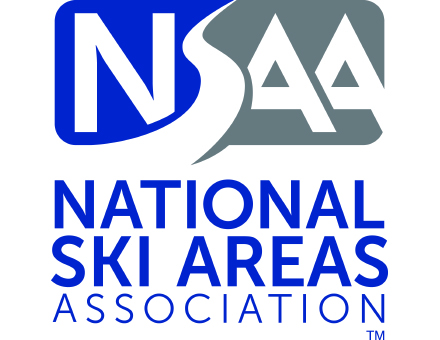SAM Magazine—Lakewood, Colo., May 9, 2023—U.S. ski areas recorded record visitation for the 2022-23 season with a total of 64.7 million skier visits, according to preliminary data from the National Ski Areas Association (NSAA).  That is a 6.6 percent increase over last year’s record season. A skier visit is recorded every time an individual uses a lift ticket or pass at a ski area.
That is a 6.6 percent increase over last year’s record season. A skier visit is recorded every time an individual uses a lift ticket or pass at a ski area.
The number is preliminary as several ski areas have extended their seasons. NSAA plans to collect updated numbers as those ski areas close for winter operations.
The final total was well above operators’ average estimates in an unofficial poll conducted by SAM. In April, only 6 percent of SAM survey respondents estimated more than 63 million for the total number of skier visits at U.S. ski areas for the 2022-23 season (see “A Season of More Ups Than Downs?”, SAM, May 2023).
“Two consecutive seasons of record visitation signals that the U.S. ski industry is healthy, and that the demand for outdoor recreation is strong,” NSAA said in a press release. It attributed this record season to robust snow in the Rockies and Pacific Southwest regions; growing season passes and frequency product options; and a pandemic-spurred return of lapsed skiers.
 Regional breakdown. The Rocky Mountain region finished with a record high number of skier visits for the second consecutive season, totaling 27.9 million. The Pacific Northwest region also reported its best year on record, totaling 4.5 million visits. The Pacific Southwest and, perhaps surprisingly, given the lackluster snow conditions, the Northeast also saw increases in season-over-season skier visits. Meanwhile, the Southeast and Midwest reported small decreases in skier visits compared to 2021-22.
Regional breakdown. The Rocky Mountain region finished with a record high number of skier visits for the second consecutive season, totaling 27.9 million. The Pacific Northwest region also reported its best year on record, totaling 4.5 million visits. The Pacific Southwest and, perhaps surprisingly, given the lackluster snow conditions, the Northeast also saw increases in season-over-season skier visits. Meanwhile, the Southeast and Midwest reported small decreases in skier visits compared to 2021-22.
Snowfall. Generally, the old axiom “more snowfall equals more skier visits” proved true this season, with record snow totals at western ski areas contributing to increased visitation frequency despite weather-related travel challenges, according to NSAA. Average snowfall at ski areas nationally totaled 224 inches, a 30 percent increase over the 10-year average of 173 inches. The average length of season also increased six days over the previous season to a total of 116 days.
Operating areas. The number of operating ski areas also grew from 473 last season to 481 this season. However, NSAA noted that “the growth in operating areas contributed only marginally to the overall increase.”
Season passes. For the fourth season in a row, season passes surpassed day tickets in share of skier visits. Season pass holders made up 50 percent of visits nationally, with standard day lift tickets making up 33 percent of visits. The balance is claimed by frequency products, off-duty employees, complimentary products, etc.
Staffing also recovered somewhat from last season, with 60 percent of ski areas reporting being understaffed, down from 81 percent last season. The average number of positions left unfilled also decreased from last year’s high of 72 to an average of 39 positions this season.
Average ski area wages increased 18 percent from the 2021-22 season, well outpacing the national average wage increase of 4.6 percent. Approximately half of all ski areas reported to NSAA that they are planning to increase their workforce housing capacity.
Capital investment by ski areas reached a record high, totaling $812.4 million in the 2022-23 season. The majority of that capital was invested into lift infrastructure, with 63 new and 86 upgraded lifts installed at ski areas across the country. Last season, the average ski area invested nearly $26 per skier visit back into its operation, a significant increase over the previous three-season average of $15, especially given the increase in overall skier visits, according to NSAA.
NSAA has been tracking skier visits since the 1978-79 season; its historical visitation numbers can be found here.




